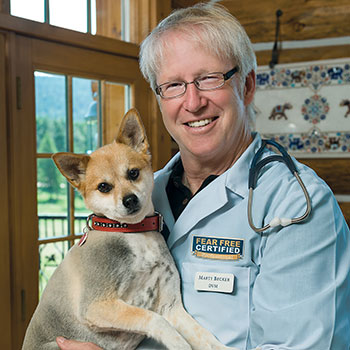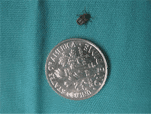Is Yawning Contagious To Our Dogs?
Richard Christian, All Pet News
 Richard Christian, All Pet News, reported on a study that said you can get your dog to yawn by yawning. But Fido knows when you're faking it. He won't fall for the faux yawn. What does it all mean? What is our dog thinking when they yawn?
Richard Christian, All Pet News, reported on a study that said you can get your dog to yawn by yawning. But Fido knows when you're faking it. He won't fall for the faux yawn. What does it all mean? What is our dog thinking when they yawn?
Yawning is contagious. We all know that. At least yawns are contagious among humans. Dogs are a different story. But a study organized by the University of Tokyo suggested that yawns do play a role in a dog's life, just not the one we might have assumed. It seems that when your dog yawns, that might be his way of saying he cares about you.
According to the study, dogs are more likely to yawn in response to their owner's yawning, than to a stranger's. This may not sound like much on paper, but the scientists involved in the study suggested this demonstrates a dog's emotional connectedness to his owner (and humans in general).
The study included 25 dogs that watched their owners and strangers yawn, and even pretended to yawn. One assumption prior to the study was that dogs yawned as a form of stress, since yawning can be caused by anxiety. This assumption was quickly ruled out when there seemed to be no change in the yawning dogs' heartbeats.
What the study showed, however, was that dogs were more likely to yawn after their owners yawned and were less likely to yawn if a human offered a fake yawn. This is quite similar to a study released previously that showed that humans are more apt to succumb to contagious yawning in response to the yawns of people they care about the most.
Richard himself did a lot of online research, which wasn't much fun. So, he did some hands-on research with his own dog and cat.
Richard's research showed that he has the laziest dog in the world who is already yawning on his own. He didn't know if he capitalized on what his dog already did or if his dog really cared about him.
By the end of the week, Richard had a complex and started thinking that perhaps his dog didn't care for him at all!
Unfortunately, all of this yawning started transferring over to Richard's fiancée. When she yawned, Richard didn't respond with his own yawn right away, which lead him to question whether or not he cared for her! Complex number two!
Sometimes we are sometimes duped by fake yawns, which caused our yawning reaction. However, our dogs don't succumb to a fake yawn, so does that mean they are smarter than us? All of this creates yet another complex in Richard!
Bottom line is that the study showed that when our dog yawns with us, they feel that we are stressed or tired and they want to let us know that they care about us.
Cat Friendly Practices (CFP)
Dr. Marty Becker, America's Veterinarian
 Dr. Marty Becker is America's Veterinarian and featured veterinary correspondent for Animal Radio. Today, Dr. Becker discusses cat friendly practices.
Dr. Marty Becker is America's Veterinarian and featured veterinary correspondent for Animal Radio. Today, Dr. Becker discusses cat friendly practices.
Cats need veterinary check-ups to prevent and treat health concerns. Preventive care examinations for all cats should occur a minimum of once yearly and more frequently for senior cats and those with chronic conditions. Cats age more rapidly than we do, so preventive care examinations are a crucial part of a healthy lifestyle. During the physical examination, veterinarians can often detect conditions that may affect your cat's health long before they become significant so they can be managed or cured before they become painful or more costly.
But it's not easy to get your cat into a vet's office. What every pet owner should know is that dogs are predators, while cats are both prey and predators. Whenever a cat goes to the vet's, they are not predators they are only prey.
There are three things a cat will do. One, they will take flight when you try to put them in the carrier. Two, they will freeze (this was thought to be much easier because they just sit there while being examined because they are so stressed). Thirdly, they will fight.
Fortunately, we now know so much more about these cats and there are several things we can do to make the vet visit less frightening for them.
You can use cat pheromones at home so they are less stressed before they go to the vet's. Also, leave the cat carrier out year round and put toys and treats so they won't only see it when it is time to visit the vet's. Dr. Becker has helped design a new carrier to make it easier for your cat or small dog. It is called the Navigator Kennel. The front door swings both ways and it opens on the top for easier loading. It is also easier to take apart to remove an animal. And, a vet can take just the top off and exam your cat right in the carrier.
Some vets are even spraying themselves with cat pheromones. These practices also place a cover over the carrier to mask the stimuli that the cat sees. They may also give the cat a prescription "chill" pill called Anxitane, which is a green tea extract and puts them in a very relaxed state. Most cats love this pill and will take it willingly.
These new practices also take you immediately into a waiting room, so you don't have to sit in the reception area with other cats and dogs. The carrier is then placed on the floor with the door facing the wall. The cat will then sit there with his owner for about 10 minutes while special music is being played.
Next, the vet enters wearing pheromones. While they do some exams on the table, most of the exams are done in the owner's lap or sitting in a chair side-by-side. They then proceed by starting the exam at the tail and work towards their face. In the past, the exams were started at the face, which increased the cat's anxiety.
So how do you find one of these Cat Friendly Practices (CFP)? There are about 3,000 members of the American Association of Feline Practitioners (AAFP). A vet has to apply to become a Cat Friendly Practice and has to meet certain criteria. Visit CatVets.com to find one in your area.
In the coming years, you will be seeing a totally different way of veterinary practice. You will even see hospitals where cats can enter through a separate door right into the exam rooms. And for dogs, in the past there was an outside area where they could eliminate. Unfortunately, there is a lot of cortisol that is released in their urine, which is a stress hormone. When a dog goes there, it is almost like them reading a sign that says, "All hell's going to brake loose in here." But in the future, you will see a special place for dogs to eliminate that will give them a spray of pheromone and possibly dispense a treat when it senses a dog is there.
Visit Fear Free Happy Homes for tips on making your home fear free and to locate a Fear Free Veterinarian near you. Go to Fear Free Pets to become certified.
Listen and Explore the Fear Free Expert Series
 Ticks Hitchhike on City Dogs Too - Dr. Debbie
Ticks Hitchhike on City Dogs Too - Dr. Debbie
Ticks are common parasites known to infect people, pets and spread disease. Over 850 tick species exist worldwide, although fewer than a dozen species are of risk to pets in the U.S. But here in Las Vegas, pet owners often dismiss the existence of ticks with the likes of Bigfoot or the Loch Ness Monster. Think ticks are only a problem for pets that travel or visit the mountains? Think again.
The Tick Tale
Ticks are parasites known to infect mammals, reptiles and birds and feed on their host's blood. Although of tiny size, ticks ingest 200 to 600 times their weight in a blood meal.
Ticks are attracted to a host's movement, body warmth or exhaled carbon dioxide and then latch on. Through this feeding behavior they can transmit diseases to pets such as Lyme disease, Rocky Mountain spotted fever, Ehrlichia, Babesia and Tularemia. Disease transmission takes some time and may occur after 36 to 48 hours of feeding behavior.
Some ticks can live months or up to a year off its host without a feeding, so year-round prevention is important for pets at risk for continued exposure.
Battling Ticks
There are many topical tick control products available for pets. Speak with your veterinarian for a product that is effective and safe with your pet's individual health in mind. Cats are sensitive to some ingredients, may develop toxicity, and should never be treated with a product labeled only for dogs. Additionally, pet owners using multiple products on their pet should first consult with their veterinarian to ensure safe use of combined products.
In addition to topical tick control, environmental treatment with foggers, sprays or pest control service should be considered for heavy infestations. Limit tick habitat zones by maintaining landscaping, avoiding overgrown grass and keeping shrubs and plants trimmed.
Pet Screening
Perform daily tick checks during tick season. Examine your pet for ticks in areas that the parasites hang out - around the head, behind ears, armpits and between toes.
When removing a tick, avoid handling it directly. Wear gloves or handle with a tissue, since ticks can pass infections to people as well. Grasp the tick with tweezers close to the skin. Extract the tick by pulling straight out of skin. Don't squeeze, twist or leave any legs behind. Disinfect the area and dispose of ticks in rubbing alcohol.
 Here's a photo of a typical tick, born and bred in Las Vegas and extracted from one of my Shih Tzu patients named Kane. Kane never leaves the state, doesn't hike in the mountains, and enjoys the comforts of a house-dog lifestyle. A tick was discovered on Kane after a day of supervising his owner's yard work and shrub trimming.
Here's a photo of a typical tick, born and bred in Las Vegas and extracted from one of my Shih Tzu patients named Kane. Kane never leaves the state, doesn't hike in the mountains, and enjoys the comforts of a house-dog lifestyle. A tick was discovered on Kane after a day of supervising his owner's yard work and shrub trimming.
Maybe Kane's story will be an eye-opener for city dwelling pet owners. Pet parasites like fleas, ticks and mosquitoes still lurk in that urban jungle.
Visit the Dogs & Ticks website for more information ticks, diseases and prevention.
Featured veterinarian known as "Dr. Debbie" on national pet radio program, Animal Radio. Ebook author of "Yorkshire Terriers: How to Be Your Dog's Best Friend"; "Pugs: How to Be Your Dog's Best Friend"; "Mini Schnauzers: How to Be Your Dog's Best Friend"; and "Shih Tzu: How to Be Your Dog's Best Friend." Dr. Debbie's books.
Visit Website
The Dogfather's Grooming Tip with Joey Villani
 Grooming On A Budget
Grooming On A Budget
If you're on a budget, how long can you wait before you take your dog to a groomer? Are there things you can do at home between visits? If you are trying to stretch out the time between grooming visits, yes, there are things you can do at home to help.
If you have a longhaired dog, combing and brushing is essential. You will need to both brush and comb them at least two to three times a week, depending upon the length of their hair.
For a short haired dog, or a dog that basically sheds but doesn't knot up, as well as long-haired dogs; if you're doing some work on them at home, you can get by with taking them to the groomers with the change of each season, or about 4 times a year. Once your dog's coat feels the change in the atmosphere of the new season, their coat will change. This is when you normally see more shedding and more matting, where you might need a little more help from a professional.
When it comes to their nails, you should take them to the groomer's every four to six weeks and have them checked. If you have an active dog, they will grind them down by themselves with running around. But if your dog isn't active, go to the groomers and let them do it. They will usually charge about $15 to trim the nails.
With a little due diligence, you can stretch your grooming visits out while still maintaining your pet's health.
Animal Radio News with Stacey Cohen
 Leaking Man Tries To Smuggle Fish In Pants
Leaking Man Tries To Smuggle Fish In Pants
An embarrassing leak foiled one man's smuggling attempt in New Zealand. The Vietnamese national tried to go from Australia to Auckland with live tropical fish hidden in plastic bags and stuffed in his pockets. But airport officials grew suspicious when they noticed there was water seeping from his pants. The suspect initially tried to convince customs that he was just carrying extra water because he was thirsty. They weren't convinced, however, and decided to search the passenger, which led to the discovery of seven live fish. He faced charges under New Zealand's Biosecurity Act, which carried maximum penalties of five years behind bars or a fine of more than $77,000.
Rent-The-Chicken
A couple in Freeport, Pennsylvania give aspiring chicken farmers a chance to take a test run with the animals. Phil Thompkins and his wife Jenn started a business called "Rent The Chicken," which allows people to care for chickens. A renter gets delivery, setup and pick-up of the contents; two chicken laying hens (8-14 eggs per week); one deluxe chicken coop that holds about four hens and can be easily moved; one custom food dish; one water dish; 100 pounds of chicken feed; a quick guide for taking care of your chickens; and a copy of "Fresh Eggs Daily" by Lisa Steele. The couple decided to start the business after seeing friends struggle with raising chickens. Phil also says he's noticed raising chickens is something a lot of people are into, but most don't know where to start.
 Labs Sniff Out Rat-Sized Snails
Labs Sniff Out Rat-Sized Snails
Officials in Florida turned to Labrador retrievers to help get rid of an invasive species of snails. Over the years, the Giant African Land Snail took over the Miami area. The snail, which can grow to the size of a rat, can carry a parasitic rat lungworm that can be harmful to humans. State agriculture officials began an aggressive extermination campaign that included specially trained Labrador retrievers that could pick up the snail's scent.
Missing Diamonds Found But Couldn't Be Retrieved For 8 Years
A British woman located her missing diamond earring, but she had to wait almost a decade before she could wear it again. The woman's pet chicken snatched the $450 piece of jewelry while she was perched on her shoulder. Veterinarians determined the earring was trapped in the chicken's stomach. And while they said they could remove it with a risky surgery, the woman ruled that out because she said her daughter would be devastated if her pet chicken died. So instead, they intended to wait until the chicken grew old and passed away from natural causes.
 Lab Adopts Baby Squirrel
Lab Adopts Baby Squirrel
For humans, the adoption process is complex, lengthy and often difficult. For animals, it pretty much consists of picking up an orphaned baby with your mouth (provided it fits in your mouth), bringing it home and hoping your human parents let you keep it. That's the way it worked out for a yellow lab who found a wee squirrel separated from its mommy, scooped it up and took it back to the house. The lab and the squirrel soon became fast friends.
 Listen to the entire Podcast of this show (#1340)
Listen to the entire Podcast of this show (#1340) 




